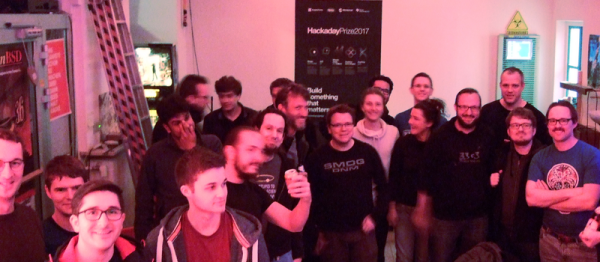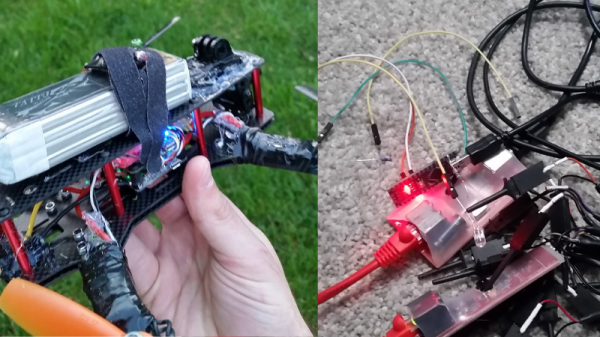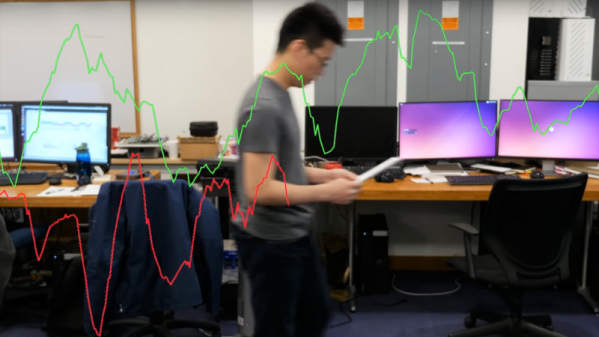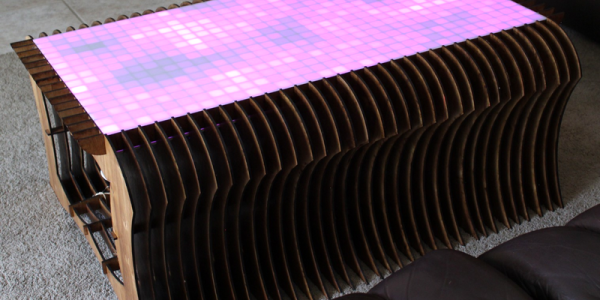Thanks to everyone who came to the Hackaday Prize Make Munich Meetup and Bring-a-Hack last night! We had a great time, and there were a bunch of cool projects on display, some of which we even got pictures of. Frankly, we were enjoying chatting too much to be peering through a camera lens.
Around 30 people made it over to the Munich CCC, including some familiar faces from the last time we had a party in Munich. Although it was a mostly local crowd, we also had visitors from Switzerland, Austria, and even the US of A: TV-B-Gone inventor, HaD Prize judge, and mad hacker [Mitch Altmann] was in the house.
After we got a little food and drink, we opened up the floor for the projects, lightning-talk style. The largest projects were probably a tie between an own-design CoreXY 3D printer and a boombox with some serious sound output. One guest’s automated bacterial culture apparatus probably wouldn’t have fit on the table, so it’s OK that it got left in the lab. The smallest hack? Probably [Alex]‘s super-mini USB LED clock gizmo, complete with hand-soldered 0402 LEDs, and “even smaller stuff on the backside”.
Continue reading “Hackaday Prize Bring-a-Hack Munich Was Great”

















